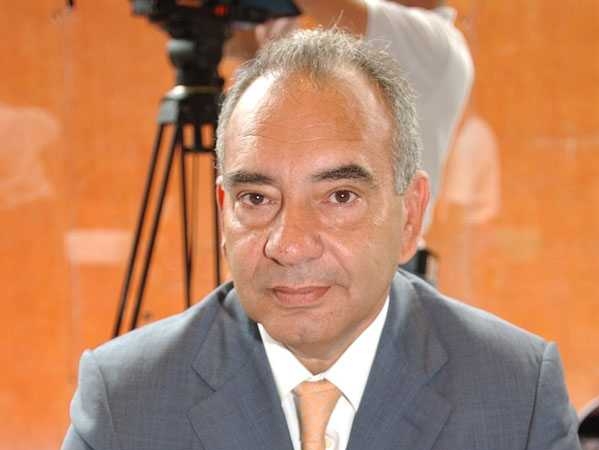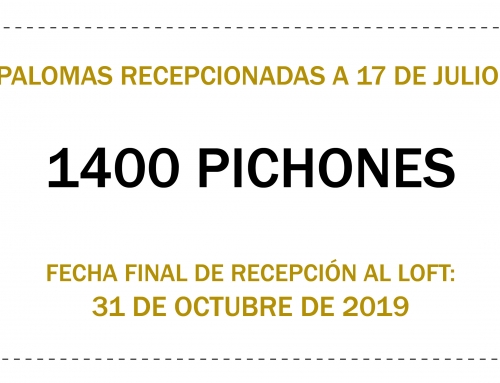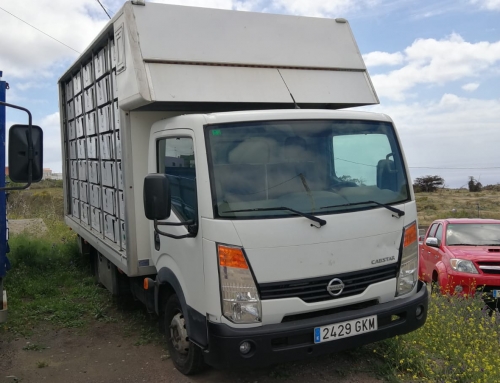Rafael Medina Jaber is the CEO of the One Loft Challenge derby, which this year celebrates its second edition. He is endorsed by more than 20 years dedicated to pigeon sport, as he was part of the first committee of the International Federation with Carlos Márquez Prats at the head, creating the International Grand Prix. His club, the Parra Negra, is one of the pioneers in Gran Canaria, an island from where he intends to turn around this type of competition, offering to the fanciers the possibility of measuring their pigeons, simultaneously, in two competitions in equal conditions with the particularity that, in one, the birds fly over sea and, in the other, over land.
Why organize a Derby like the OLC?
Rafael Medina: The One Loft Challenge project is designed based on an experience of more than 21 years of continuous running a One Lotf Race and, therefore, Gran Canaria OLR is currently the dean derby in Spain and the first to international level. In addition, with the previous experience of having been part of the first committee of the International Colombian Federation with Carlos Márquez Prats at the head, we created the International Grand Prix and substantiated by the experience accumulated in this activity for many years by the family.
How many participants were in the previous edition?
R: This edition has been complex because we have proceeded to the construction of the facilities in Morocco, which we finished at the end of last August and the creation and development of the entire project and preparation of the permits for the pigeon entrances from abroad. of Morocco and all the implementation management has been very complex. In this way, we approached the 600 pigeons in Morocco and Gran Canaria, which also suffered the integral start-up of the two races, reached a little more than 800 pigeons. About 150 participants.
Why is it interesting to participate in this type of competition?
R: Because One Loft Challenge consists of two equal races in two pigeons located in two different countries and at the same height in view of the map and separated just over 260 km. Participation is done by teams.
The pigeon team competes as follows: one part of the team is on land, in Tarfaya-Morocco, on the desert, and the other part of the team is on sea, in Gran Canaria on the ocean and with the idea that Participants may have a different experience. At the same time they can see how their pigeons are flying in different and extreme situations, to get a good selection of competitive and quality birds. That is, they compete in the two forms of pigeon races that exist in the world and in this case simultaneously with the same team and with the same management and experience and at the same time. Only one in the world.
What kind of pigeons are the most recommended, or of what lines, to compete in the One Loft Challenge, according to your criteria?
R: Pigeons with a lot of combat capacity and that are not delivered by fatigue. They must be birds of great psychological strength and with a great capacity for orientation and, also, that at a young age they wake up very quickly.
How many pigeons reached the final in the last edition?
R: In Gran Canaria in the 2016 Edition of 500 km above sea, 311 pigeons arrived
In Gran Canaria in the 2017 edition of 500 km above sea 50 pigeons arrived
In Gran Canaria in the 2018 edition of 500 km above sea, 130 pigeons arrived
In Gran Canaria in the 2019 edition of 500 km above sea, 7 pigeons arrived
In Tarfaya-Morocco in the 2019 Edition of 500 km on land arrived 56 pigeons
How do pigeons get to the Derbys?
R: The coordinators have full control over shipments and dates. They also have the authority to reject anyone for the sake of the race or any pigeon for health reasons. The registration form must be sent by email on the day of shipment of your pigeons or delivered to your coordinator to send. The health certificate / import permit, the commercial invoice and the registration form must be sent with the pigeons to the organization. The pigeons can be sent to the Gran Canaria One loft Race facilities and the organization will be in charge of transport to the Tarfaya-Morocco OLR facilities. (€ 10 per pigeon). All information is available on our website: www.oneloftchalllenge.com
What protocol is used in the tuning of the pigeons?
R: The facilities in Gran Canaria are authorized as a Balay Quarantine Center of the European Union and we follow the procedures established in the European Directive 92/65 / EEC.
At the same time it is a Bird Center called The culture with birds, declared of public interest by the Government of the Canary Islands according to decree 169/2011 of June 23.
How do you train pigeons?
R: During the first training period when dovecotting, the pigeons are all morning loose outside the loft and without discipline and with weekly baths with the necessary products.
When they are formed, they are separated by sex to avoid animal wear and they are prepared with training for several hours a day.
And when the competition begins, they are gradually subjected to discipline with 2 hours of daily flights and one day free flight and bath.
What characteristics does the derby have that you manage that differentiates it from others?
R: Two winter races at the cost of one
They develop at the same time
One race is over sea: Gran Canaria OLR over the Atlantic Ocean and the other is over land, Tarfaya-Morocco over the Sahara desert.
Participants can compare how their pigeons work at the same time on land and on sea. High competition.
The two lofts are right on the same line on the map, only separated by half an hour by plane, 260 km exactly on the same line and in two countries and two different continents.
Pigeons fly, exactly, in the same climatic conditions: wind, humidity, visibility, temperature, etc …
The two races are led by the same team of people who have been continuously doing Gran Canaria OLR for more than 21 years, using the same method. The differences of over-sea and over-flight flights in a one loft race are 100% comparable.
The races can see them at once by live stream through our portal.
The races over sea have the same distances as the races over land
Two finals in two weekends in a row and with organized plane excursion to go see them.
Six HOT SPOT and two FINALS and about 200 cash prizes.
How is the release plan? Could you explain what it is?
R: They are described on the web and ordered in 4 parts (same for the two Derbys).
1st Part: From 10 to 12 pre-workouts, which are short loose from 0 to 15 km and the set of all, in a circular direction, like the hands of the clock, so that they know all the possible directions and wake up the orientation.
2nd Part: over 14 ascending trainings in the distances and including the trainings on sea.
3rd Part: three Hot Spot in more distant points with prizes and trophies.
4th part. The Final at a distance of 500 km on the ocean and on land, in the Derby de Tarfaya, in the desert.
The pigeons that reach the final are auctioned, how do you do it and what percentage goes to the participant?
R: The pigeons that arrive in the final are normally auctioned on our website http://www.atlanticauctioncenter.com/
What would you say to fanciers who are still thinking about which derbys to participate, how would you encourage them to do so in the OLC?
R: Because they have the unique possibility in the world of having a fancier adventure that does not exist anywhere else.
And, in addition, they have the possibility, and for free, to make a major race in one loft race and enjoy with their clubmates in an international competition, open to all countries. This is the PRESTIGE race that is 1000 km from Casablanca. They can send 2 free pigeons if they participate in the two derbys, in Tarfaya and Gran Canaria.



